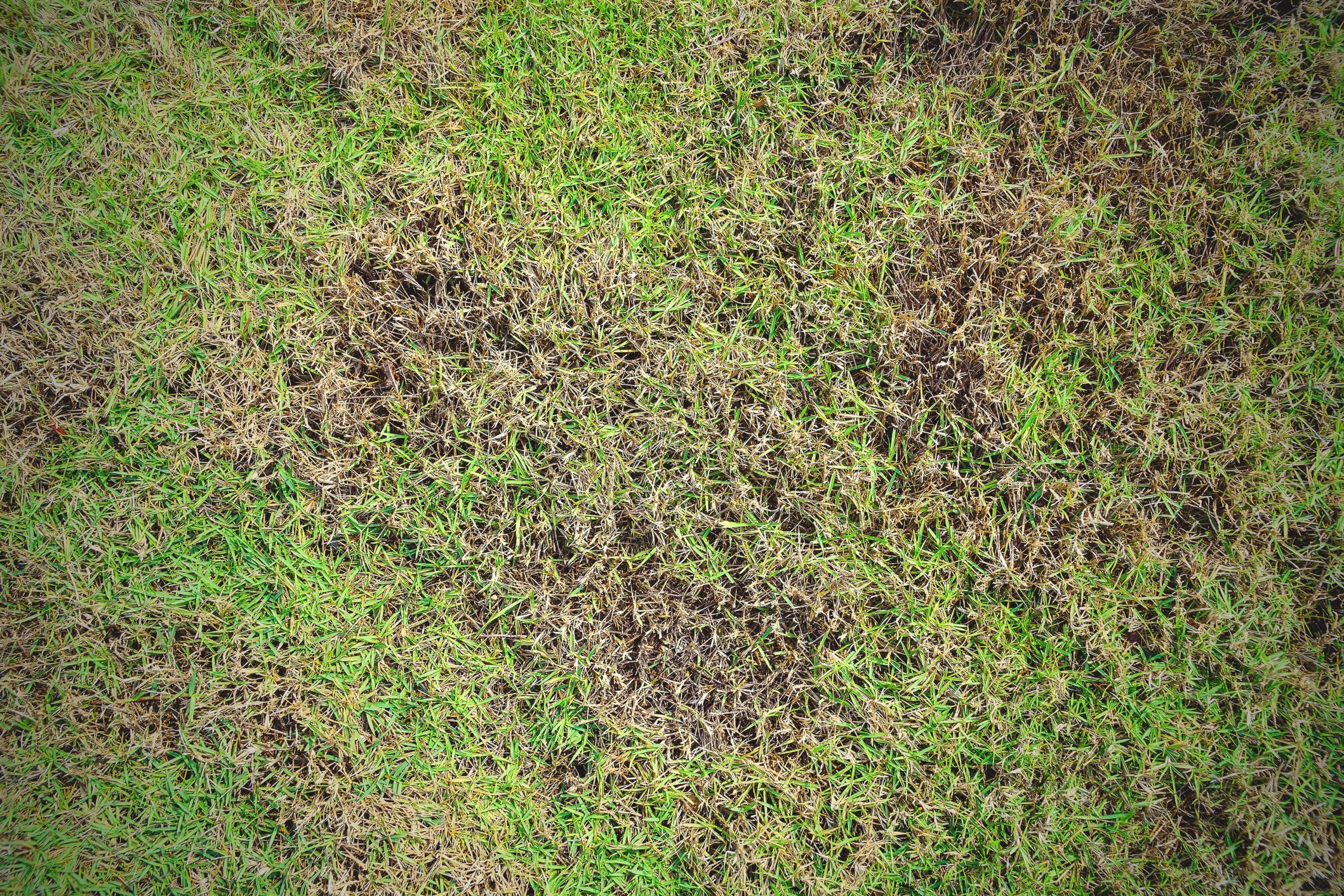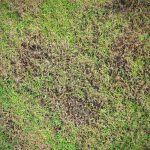Looking to fix bare patches on your lawn?
In this guide, we’ve explained how to repair patchy grass, by reseeding the affected areas.
We’ve also explained why these patches come about, and how to prevent them from coming back.
Why your grass has bare patches
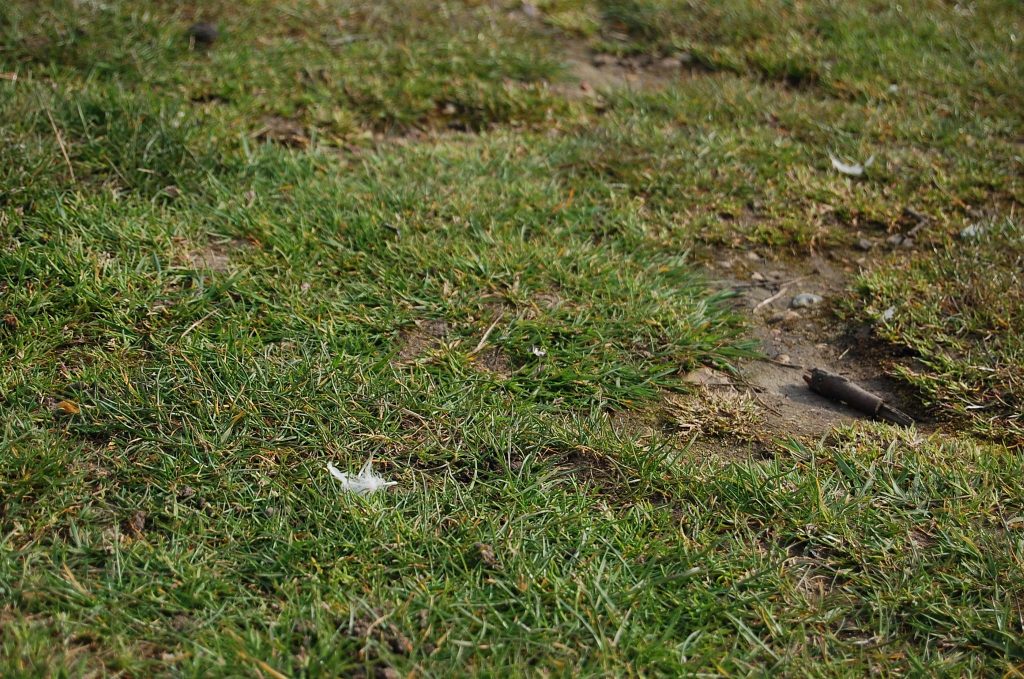
There are a number of reasons your grass might develop bare patches, including:
- High levels of use, such as from kids or pets.
- Pet urine (although your lawn will normally turn yellow first).
- Over-application of weedkiller.
- Lawn diseases, such as fungal growth (although other symptoms will show first, typically, depending on the disease).
- You might have just removed a significant amount of weeds, moss, or invasive grasses from your lawn.
To prevent bare patches from developing on your lawn, the secret is good lawn care.
Essentially, the stronger and healthier your grass, the better it will be able to resist foot traffic, disease, and other stresses, that could cause bare patches to appear.
Good lawn care means doing things like:
- Mowing your lawn more regularly, on a higher cutting height, and using very sharp blades, to prevent tearing them.
- Scarifying your lawn once a year or so, to remove thatch buildup.
- Aerating your lawn occasionally, especially if it has drainage issues.
- Trimming tree branches to ensure your lawn gets enough sunlight.
- Adding fertiliser to your lawn and/or mulching grass clippings, to give it plenty of nutrients.
To learn more about taking care of your lawn, and what activities you should be doing in each season of the year, read our lawn care calendar.
How to fix bare patches on your lawn
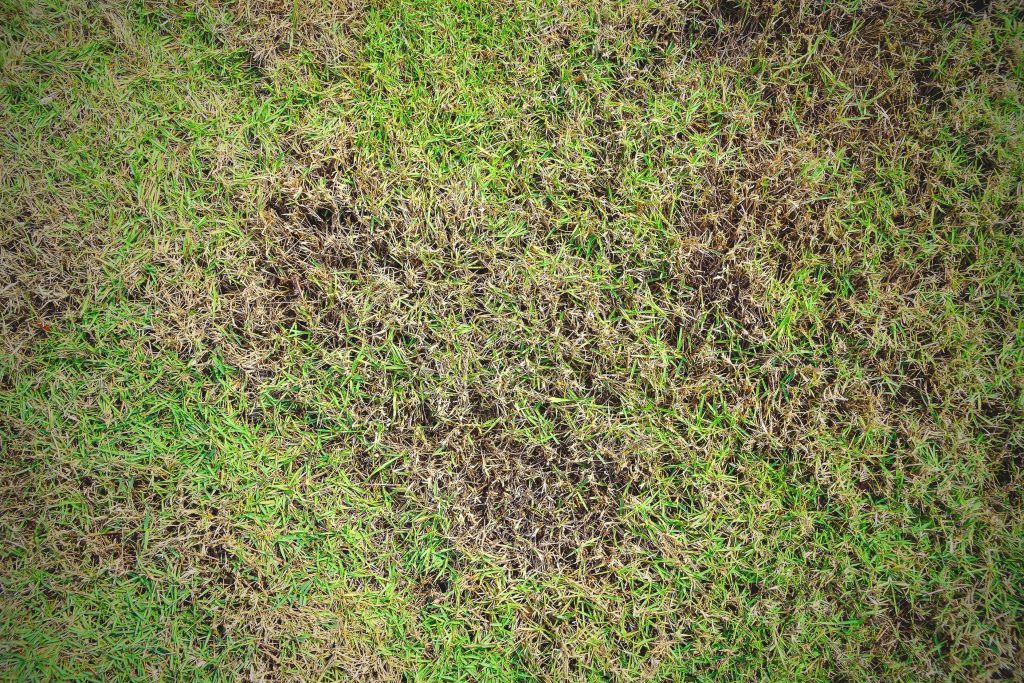
Here’s what you need to do to repair bald spots on your lawn.
Note: the best time of year to fix your lawn is in the spring/autumn, if possible (read this to learn why).
1. Prepare the soil
Before repairing bare patches on your grass, you first need to prepare the soil for the grass seeds you’ll be spreading, to give them the best chance of growing.
To do this, you want to:
- Remove any debris from the bare patches, such as sticks and stones.
- Remove any areas of the lawn that are completely dead. Most of the time, you don’t need to do this, if your lawn just had bare patches of soil. However, if there are patches of dead lawn that you don’t think will grow back, it’s useful to remove them, to clear room for the grass seeds you’ll spread later on.
- Loosen the soil, especially if it’s dry and compacted. A garden fork can help you to achieve this, especially if your bare patches are quite small, otherwise you could use a rotavator.
- Remove any weeds, ideally by hand. Weeds can impede the growth of your new grass, and it’s much easier to remove them while there’s no grass in place. If removing weeds by hand, ensure to get the entire plant, and avoid leaving any roots behind.
- Level the soil, using a rake.
2. Add fertiliser
To give your new grass seeds the best chance of growing, it’s a good idea to spread a thin layer of organic fertiliser on your lawn, especially in the areas that have bare patches.
Add a small amount of fertiliser and then rake the ground again, to ensure an even spread.
3. Buy grass seeds
At this point, you can re-seed the bare patches, to help them become lush and green again.
The first thing you need to do is try and find grass seeds that match the type of grass you already have on your lawn.
First, look at our guide to the different types of grass seeds commonly found in the UK, and compare the different varieties to your own lawn. Most lawn seed bags will have a mix of different seeds, so look for ones that predominantly contain seeds similar to your type of grass.
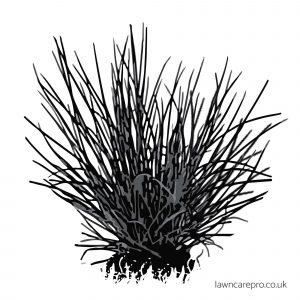
It might be difficult to find a perfect match, but most grass on UK lawns is quite green, and has a fine blade, like fescue. Therefore, if you’re unsure, fescue seed mixes are generally a good choice.
4. Spread grass seeds
At this point, you can spread the seeds on your lawn.
- You can spread by hand, or use a lawn spreader if you have large areas of bare patches. Assuming your seeds are brand new, and none of them have expired, you should spread them in a quantity in accordance with the packet instructions. If the seeds have been kept for a few months in an open bag, you will need to spread more, because some won’t grow.
- After spreading the seeds, water the lawn thoroughly, giving it a good soaking.
- For the next six weeks, keep away from the bare patches while the grass grows, and continue to water the seeds regularly. If necessary, put up a small fence to keep pets away from the seeded areas, and consider setting up a bird deterrent as well, until the seeds start growing at least.
- Optional: consider spreading a small amount of topsoil or compost on top of the seeds, to provide them extra protection from birds, and to prevent them from being blown away.
It’s also possible to repair bare spots using turf, but the process is typically much more of a hassle. You’ll have to buy the right amount of turf, cut it down to size, and then wait until it eventually looks like a natural part of your lawn, which can take quite a long time.
The benefit of using turf is you can dig it up from elsewhere on your lawn, helping to ensure that your patched areas look the exact same as the rest of your lawn. However, then you have the problem of helping the grass to grow over the area you have just taken the turf from.
Conclusion
This is the end of our guide to fixing patchy spots on your lawn.
If you’re still not sure how best to reseed areas of bare grass, leave a comment below, and we’ll get back to you.

I’m Josh, and I’m the head writer at Lawn Care Pro.
I love everything lawns, but I’m a bit of a lawn mower nerd. I spend a lot of my free time tinkering with mowers, and planning my mowing schedule for the next few weeks.
I’m also into cars, which comes in very helpful when servicing a mower engine!

